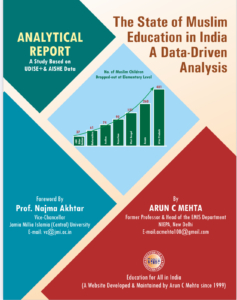Declining School Enrollment in the US: Lessons and Challenges for a Better India
The article “Why Are US Classrooms Emptying? Inside the Biggest Public School Enrollment Decline in Decades”, published on August 21, 2025, by The Economic Times, explores a critical issue in American education: a significant drop in public school enrollment. Spanning from 50.8 million students in 2019 to 49.5 million in 2023 – a loss of over 1.2 million students – this 2.5% decline is reshaping classrooms. Drawing on data from the National Center for Education Statistics (NCES) and The 74, the piece projects a further dip below 47 million by 2031. For a Better India, understanding these trends offers lessons, as India faces its enrollment challenges, with UDISE+ data showing a drop of 37 lakh students from 2022-23 to 2023-24.
Strengths of the US Article
The article is a well-structured, data-driven overview that makes complex trends accessible. It ties the enrollment decline to demographic realities like low birth rates (under 1.6 children per woman), immigration restrictions, and domestic migration from high-cost states like California to more affordable regions. The piece shines in its breakdown of racial and geographic shifts:
- Racial Patterns: White student enrollment fell by 8% (nearly 2 million), while Hispanic and Asian numbers grew, albeit slower than pre-pandemic rates.
- Geographic Impact: California lost 325,000 students, and urban districts like Los Angeles saw high-poverty schools drop by up to 15%.
“This is more than just a numbers problem. It’s about equity, opportunity, and the future of public education.”
Linking enrollment to funding cuts – impacting arts, mental health services, and teacher jobs – underscores real-world consequences. The call for creative solutions, like staff sharing or community partnerships, feels proactive and relevant for a Better India seeking sustainable education models.
Shortcomings of the Article
While informative, the article skims the surface of some causes. It overlooks the rise of home-schooling and shifts to private or charter schools in the US, trends spurred by post-COVID dissatisfaction. Economic factors like inflation or job losses are barely touched, and policy details – such as how federal funding formulas deepen inequalities – are absent. The racial analysis lacks depth; for example, why Hispanic enrolments are still growing isn’t explored fully. Geographically, it focuses on losses (e.g., California) but ignores states gaining students, missing a chance to map migration patterns. The dramatic tone – “classrooms emptier than in decades” – can feel sensationalized, and reliance on just NCES and The 74 limits its scope. A broader range of sources or global comparisons could have enriched the analysis.
Parallels with India’s Enrollment Challenges
India’s school enrollment story shares similarities with the US but is shaped by unique factors. While the US faces a demographic-driven decline, India’s enrollment has historically risen due to initiatives like Sarva Shiksha Abhiyan and the National Education Policy (NEP) 2020. Yet, recent UDISE+ data reveals a drop from 24.16 crore in 2022-23 to 23.50 crore in 2023-24, with over 10 million fewer students since 2018-19. Primary enrollment fell from 122 million in 2020-21 to 107.8 million in 2023-24, echoing the US’s shrinking early grades.
Key drivers in India include:
- Low Birth Rates: India’s fertility rate is around 2, lower in urban areas, reducing new entrants.
- Migration: Rural-to-urban or interstate movements (e.g., Bihar to Maharashtra) disrupt schooling.
- Quality Gaps: As noted in Factors Driving the Growth of Private School Enrollment in India 2020-2025, parents are shifting to private schools for better facilities.
Dropout rates remain a hurdle, with secondary levels at 14.1%, stalling NEP’s universal education goal by 2030. Prof. Arun C. Mehta’s analysis in School Education in India: Where Do We Stand? (UDISE+ 2023-24) notes a fall from 255.74 million in 2021-22 to 234.96 million in 2023-24, warning of equity risks. Similarly, GER Trends in India 2012-13 to 2022-23 suggests stagnation in underserved regions without reforms.
Lessons for a Better India
The US article’s call for innovation – community partnerships, leasing empty classrooms—offers ideas for India. Programs like Samagra Shiksha, discussed in Decoding UDISE+ 2021-22 Enrolment Ratios, are already experimenting with such models. However, India’s scale (over 240 million students) and unique challenges – caste, gender, and rural-urban divides – demand tailored solutions. Unlike the US’s demographic inevitability, India’s decline feels more addressable through policy, like improving government school infrastructure or teacher training. Ignoring these risks widens inequalities, undermining the vision of a Better India.
This US case study is a wake-up call. Empty desks signal more profound societal shifts, and for India, tackling enrollment decline is critical to achieving equitable, inclusive education by 2030


